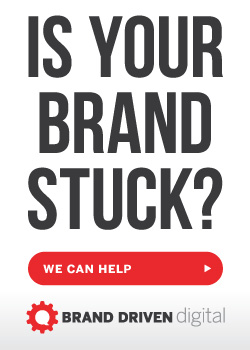Recently we’ve highlighted several benefits of paid advertising on search and social platforms. Keep in mind these methods of online advertising are most effective in conjunction with a robust online presence and a multi-faceted marketing campaign. Before investing in paid ads, build a website with engaging content and plenty of opportunities for your audience to interact with your business.
Once you have established a strong online presence for your business, you can use paid advertising on search and social to help achieve a variety of goals. For example, you could:
- Drive more traffic to your website
- Reach a larger audience to increase brand awareness
- More effectively engage with customers
- Build brand value
- Identify potential sales leads
Ok, now you’ve decided to use paid search and social ads. Where to begin? There are so many platforms out there – Google, Bing, Facebook, Twitter, LinkedIn, and more. How can you tell which one is right for your business?
When choosing a platform, there are three key factors: audience, brand, and budget. For your business, you may choose to consider additional factors. Here, we’ll focus on these three keys.
1. Who is Your Target Audience?
The first key is your audience. Who are you trying to reach? Who is your target audience? Are they familiar with your brand? Are they engaged with your brand? What is your primary goal? If you want to reach a larger audience that is unfamiliar with your brand in order to increase brand awareness, a search engine like Google may be the best place to invest. If your goal is to identify potential sales leads, a recent report by InsideSales.com suggests that LinkedIn may be the most effective social media platform.
Consider who your target audience is, and identify which platform gives you the best opportunity to reach them. If your business has a sizeable number of Facebook fans, then Facebook could be a great platform to build brand value and effectively engage with your customers.
2. How Do You Want to Share Your Brand?
The second key is your brand. What is your brand and what does it represent? How do you want your audience to interact with your brand? Every platform offers paid ads in different formats. Some, like Facebook, offer options for video, picture, or text ads. Others, like LinkedIn and Twitter, limit the options to text-only. Multi-media options can be especially important when building brand value and engagement.
3. How Much Are You Willing to Invest?
The third key is your budget. How much is a stronger brand or increased web traffic worth to your business? In general, paid search and social ads have a bidding structure, which we touched on in a recent Google AdWords post, so you are able to control your spend.
Each platform has different competitive landscapes, and those may vary over time. Depending on how active your competitors are on a specific platform, your costs may fluctuate even though your ads are driving the same amount of traffic. In addition, some platforms may have minimum budget requirements. LinkedIn, for example, requires a minimum daily budget of $10, which may sound steep at first. But keep in mind, setting that budget doesn’t mean you’ll spend it all.
So Which Platform Do I Choose?
That, I can’t answer for you. You are the person most familiar with your business. It’s your decision. Think about what goals you want to achieve with paid search and social ads, and consider the three key factors: audience, brand, and budget.
Remember, you can use paid ads on a combination of platforms to achieve multiple goals. In the same way that you can test different images and copy, you can test different search and social platforms to see what works best for your business.









